You'll find salmorejo, a cold Spanish tomato soup, on menus throughout Spain. But my favorite version is my mother-in-law Antonia's. I’m excited to share her famous recipe with you!
So grab 7 simple ingredients, and you’ll be able to make a mouthwatering batch of this refreshingly creamy cold soup.
If you're looking for more cold Spanish soups, make sure to try my recipes for beet salmorejo and cherry gazpacho.

Jump to:
Introduction
After a bad experience with gazpacho years ago, I was convinced that cold soups were an enemy. But one day, I came home hungry from work and decided to reheat some salmorejo that my mother-in-law, Antonia, had given us on our weekend visit.
Luckily, her delicious salmorejo never made it to the pot! I took one bite, followed by another, and then another. It was so delicious that I couldn't believe I'd been missing out on this fresh explosion of flavors for so long!
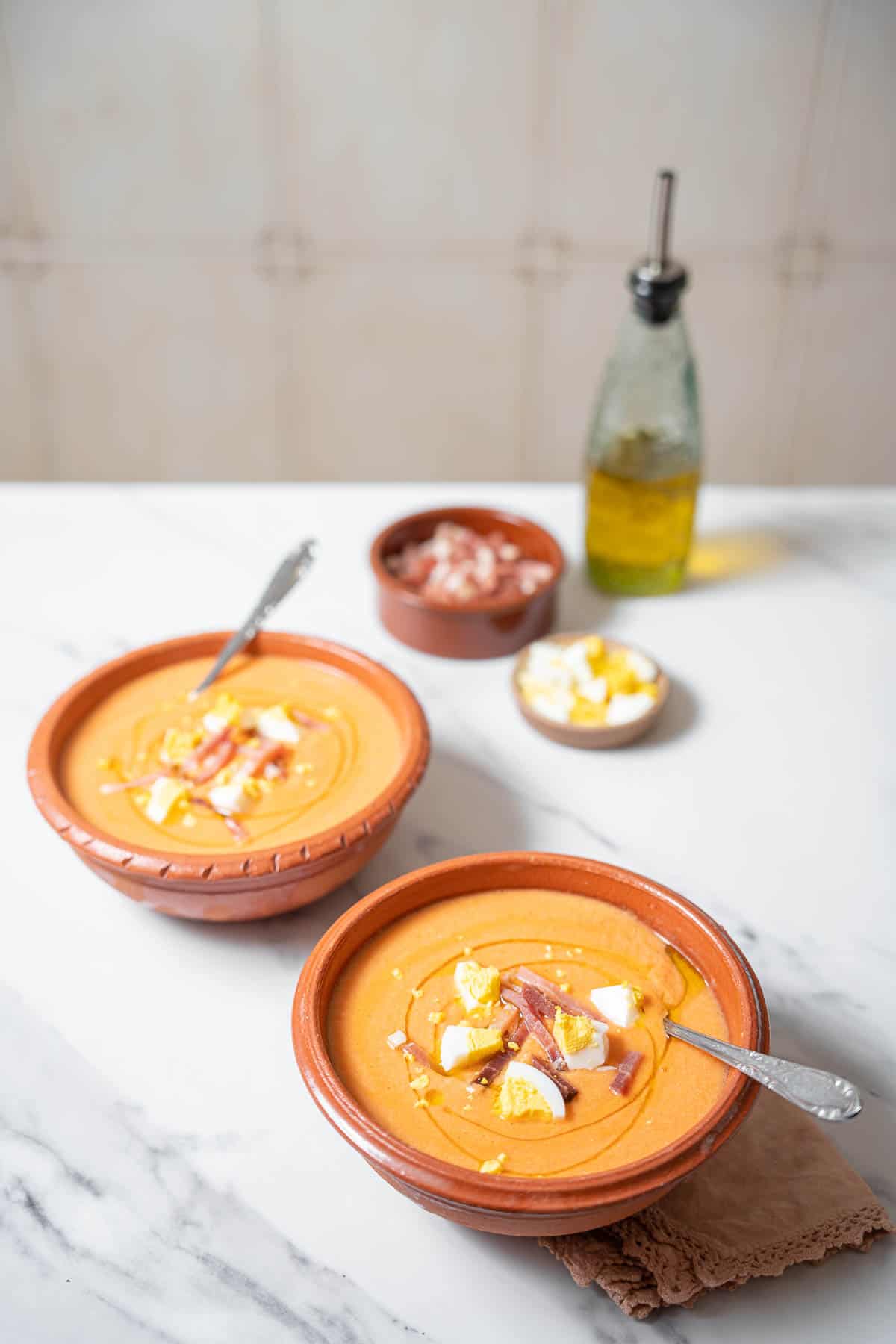
What Is Salmorejo?
Let's start with what it's not. Salmorejo is NOT gazpacho! One of the most famous Spanish dishes, gazpacho, is a cold tomato and vegetable soup, usually consumed from a glass like V8 juice.
By contrast, salmorejo is a cold tomato soup without the extra veggies, and is served in a bowl and garnished with boiled egg and ham. It's often enhanced with garlic, and then blended with plenty of stale bread, extra virgin olive oil, and sherry vinegar.
Salmorejo is not only satisfying and flavorful, but it’s also loaded with antioxidants. The smooth, emulsified texture makes many people think there is cream in the soup (it's super creamy!), but there is no dairy.
Ingredients to Make Salmorejo
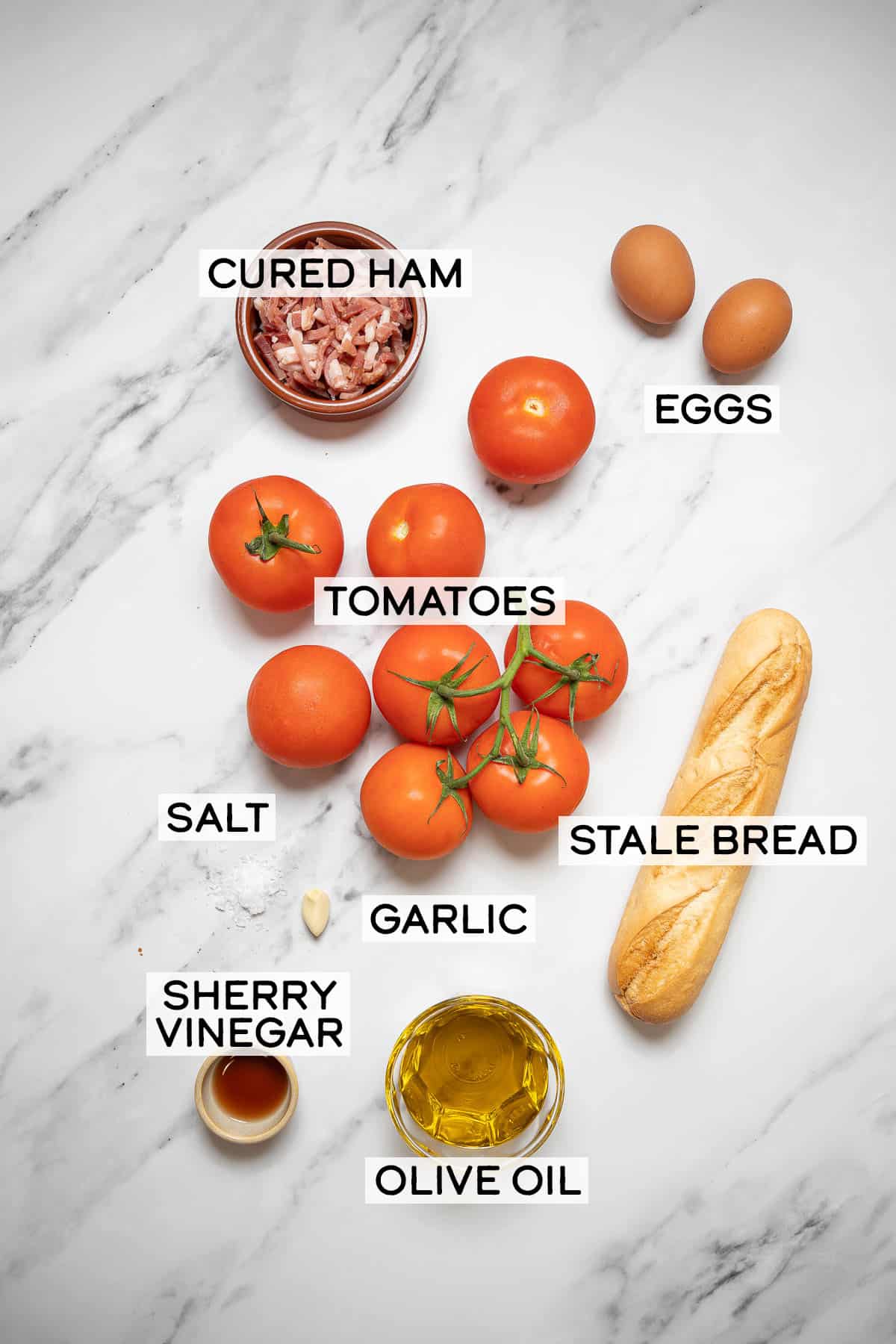
Wondering what ingredients you need to make your own batch of salmorejo? Let's talk about the most important ingredients!
- Tomatoes: Be sure to use fresh, ripe tomatoes that are juicy. The better the tomatoes, the better the soup! In Spain, we usually use pear (also called teardrop) tomatoes or vine ripe tomatoes.
- Olive Oil: Since this recipe uses a lot of olive oil,you want it to taste good and to be healthy. Be sure to use extra virgin olive oil, such as the Spanish hojiblanca variety or your favorite oil.
- Stale Bread: This is the key to salmorejo's thick texture; you can add more for a hummus-like texture or less for a thinner texture. The fluffy center of a baguette works well, but any bread with a dense crumb is great.
- Vinegar: Traditional salmorejo uses sherry vinegar from the Cadiz region (Jerez de la Frontera), which amplifies the flavor of this cold soup. If you're in the US, you can order sherry vinegar from La Tienda.
- Toppings: The most popular toppings are diced hard-boiled egg and cured Spanish ham. This recipe also blends some hard-boiled egg into the soup for an extra creamy texture.
See recipe card for full information on ingredients and quantities.
Substitutions
- Garlic: I like to add one small clove of raw garlic, but feel free to add more if desired. You can also roast the garlic for a sweeter touch.
- Sherry Vinegar: Try using red wine vinegar if you can't find sherry vinegar.
- Toppings: Try other toppings such as avocado, good quality tuna, smoked fish (sardines), or chopped fruit such as strawberries, cherries, or even green apple.
- Vegan: Traditionally, salmorejo is both vegetarian and vegan, but my recipe is not vegan because it blends a hard-boiled egg into the soup. To make it vegan, simply omit the egg and garnish of jamón, and garnish with a vegan topping such as avocado or fruit.
How to Make
If you’d like to see the full ingredients and instructions, scroll to the bottom of the post for the printable recipe card.
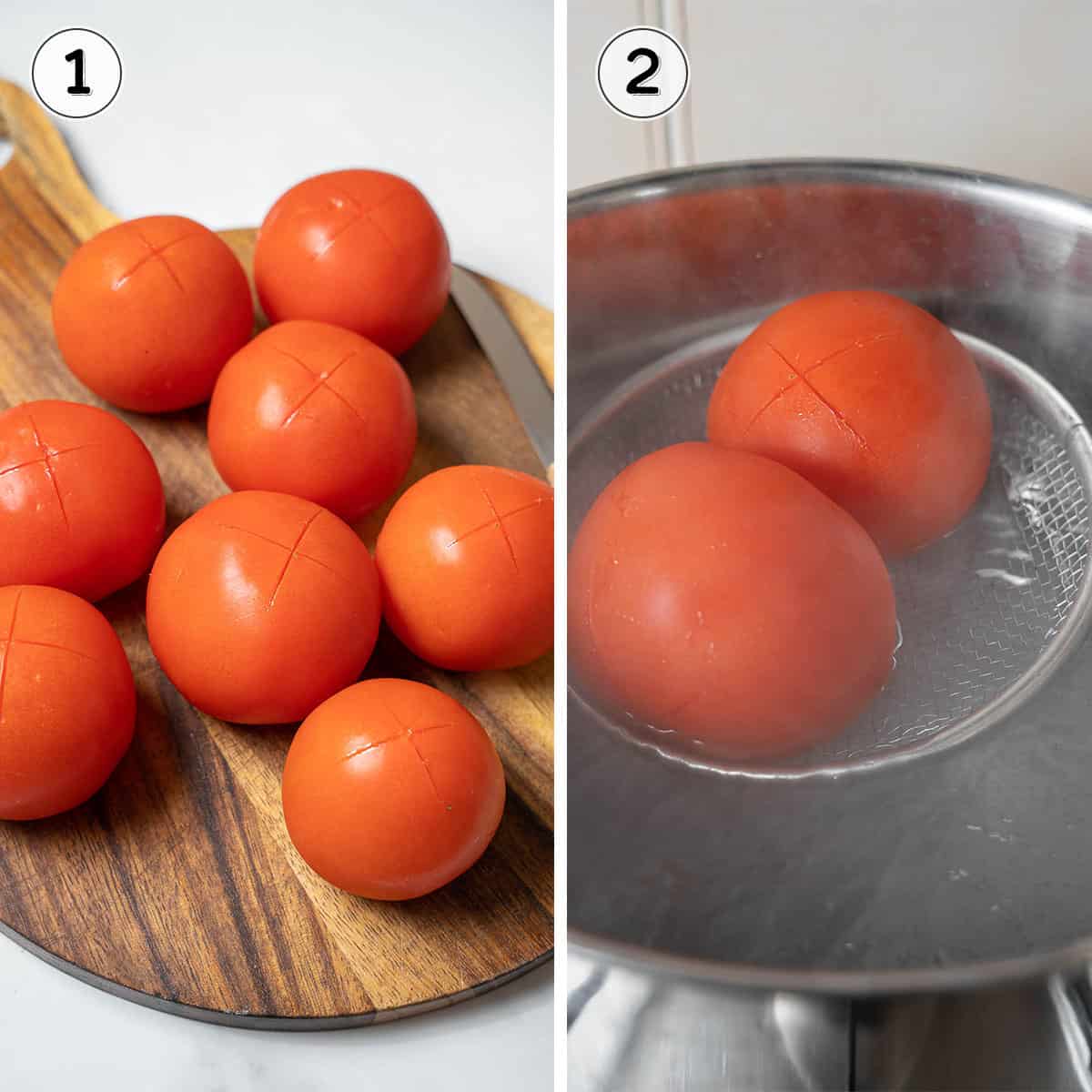
- Start by peeling the tomatoes. You can do this with a sharp veggie peeler, or by cutting an X in the bottom of each tomato.
- Place in boiling water for about 30 seconds.
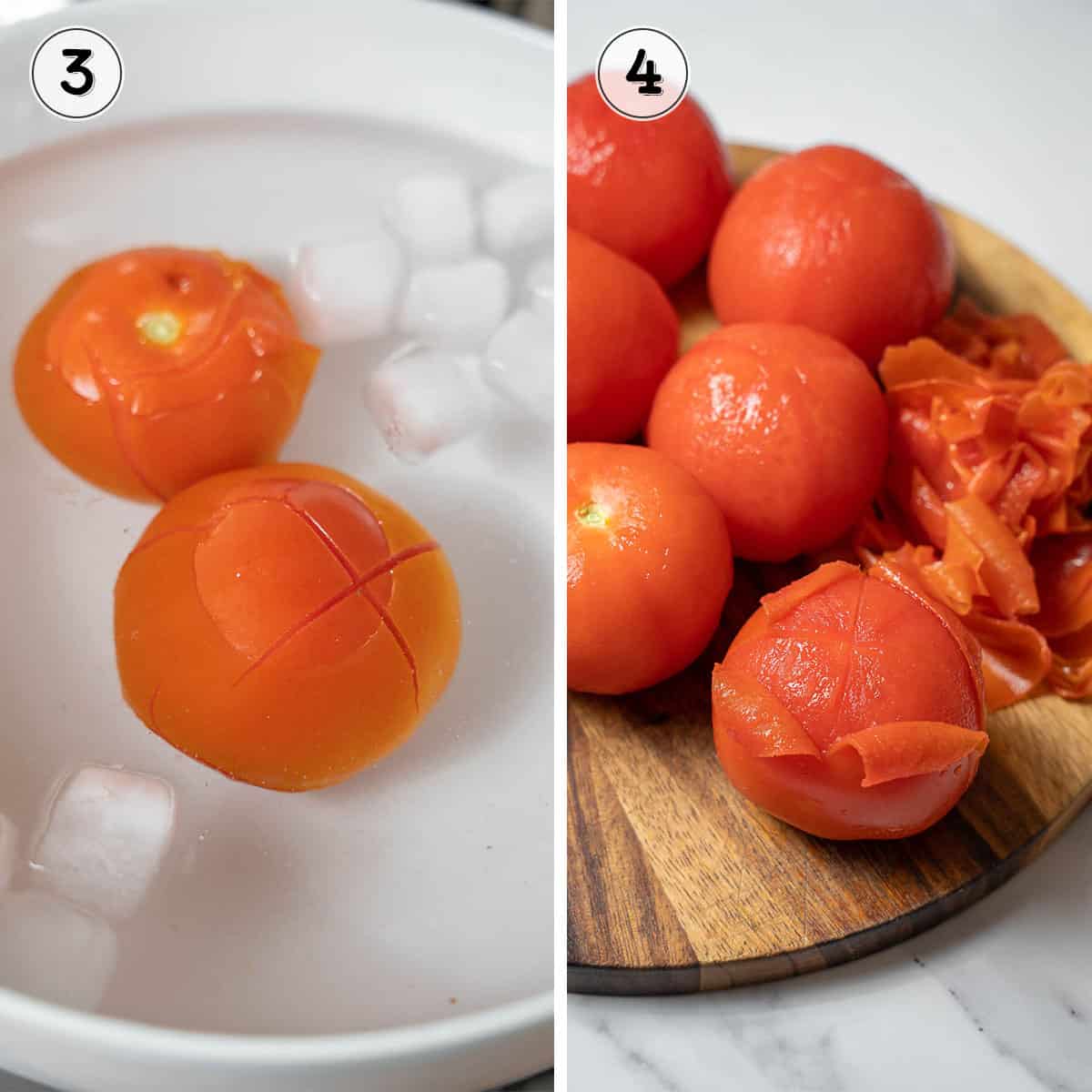
- Plunge the tomatoes in an ice bath (a bowl of ice water).
- After the tomatoes have cooled briefly, their skins should peel off easily.
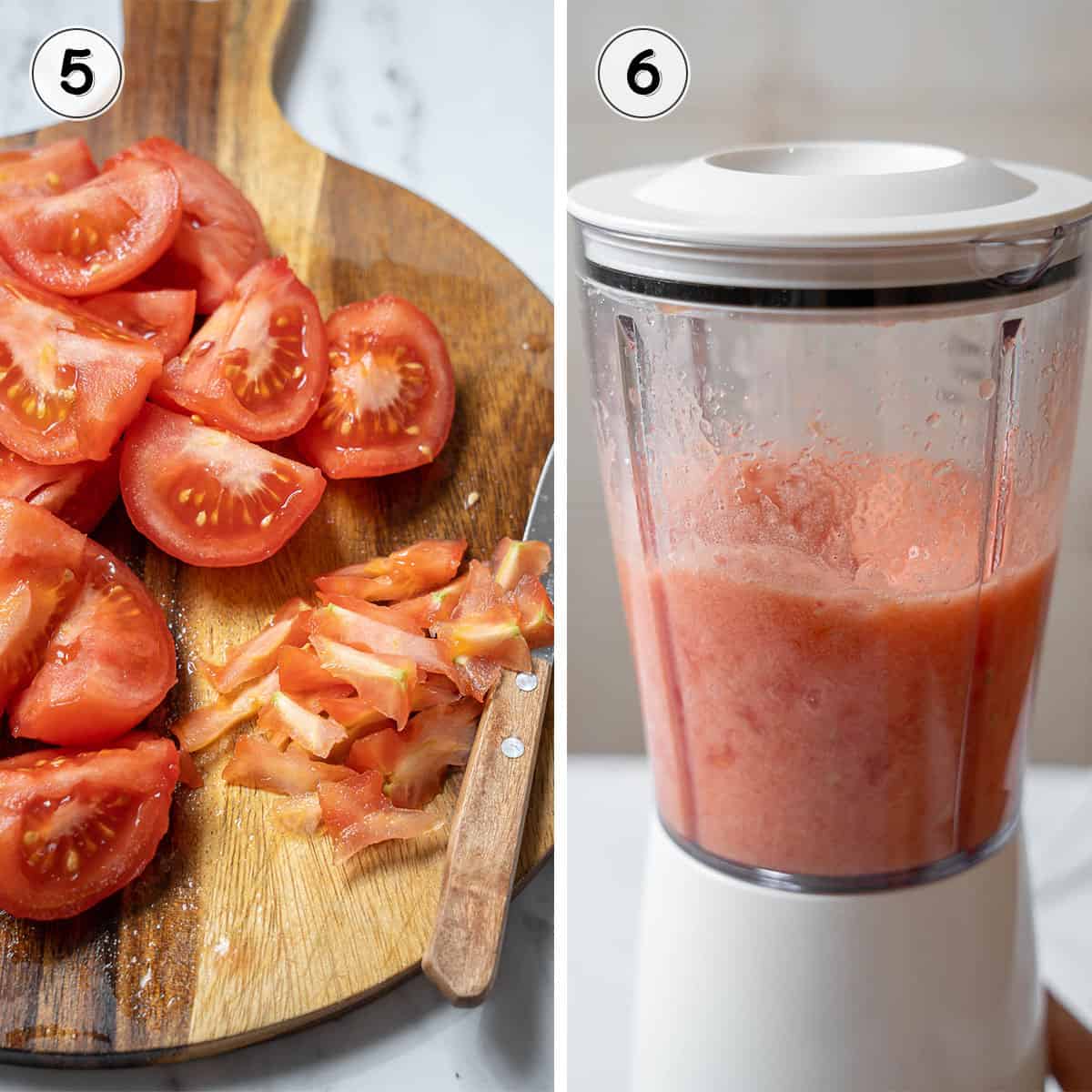
- Cut the peeled tomatoes into small pieces.
- Blend until puréed.

- Tear the stale bread into small pieces.
- Add the stale bread to the puréed tomatoes and let it sit for 5 minutes.

- Add the sherry vinegar.
- Add the garlic.
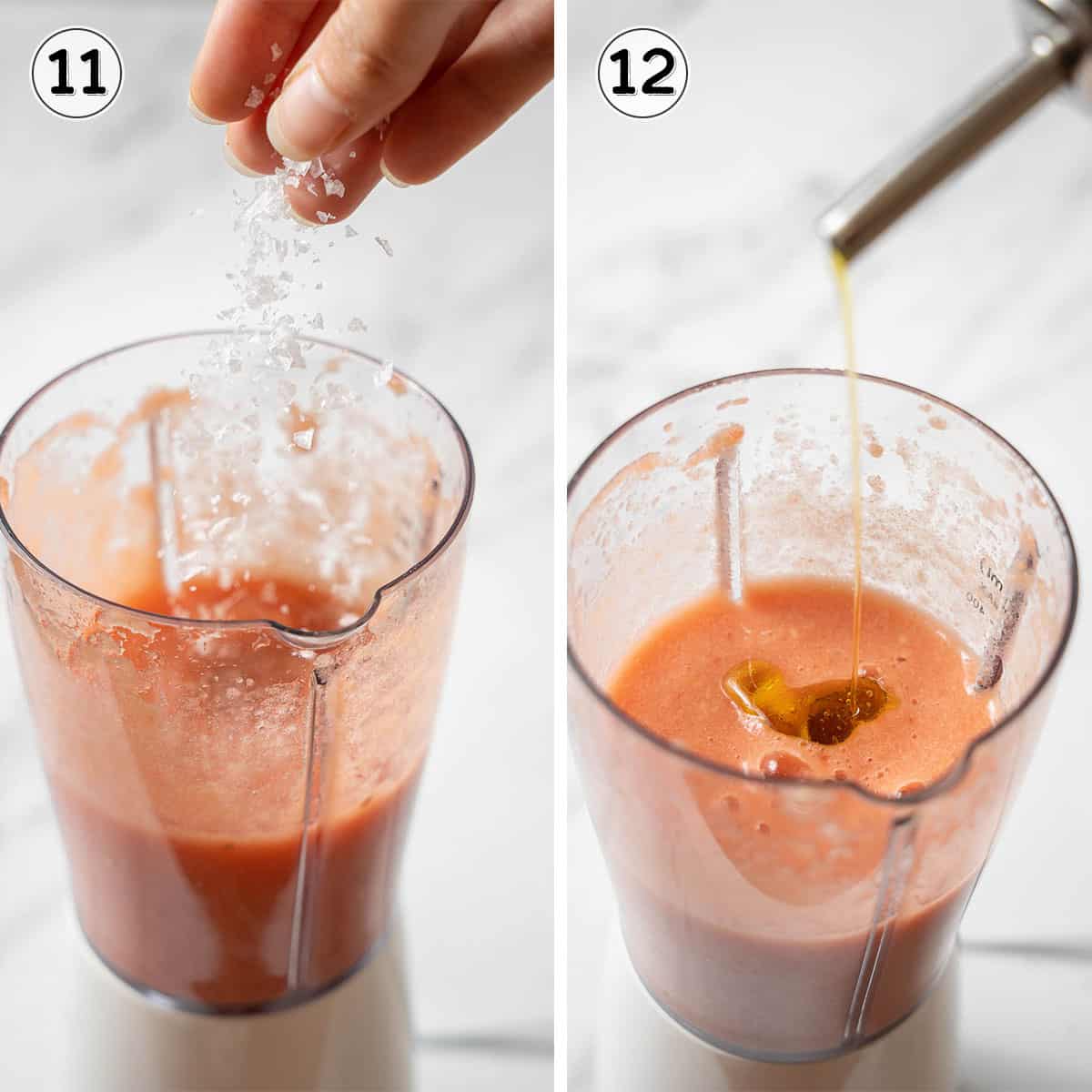
- Add the salt.
- Blend again, this time slowly adding in the olive oil. Add it slowly to make sure it emulsifies.
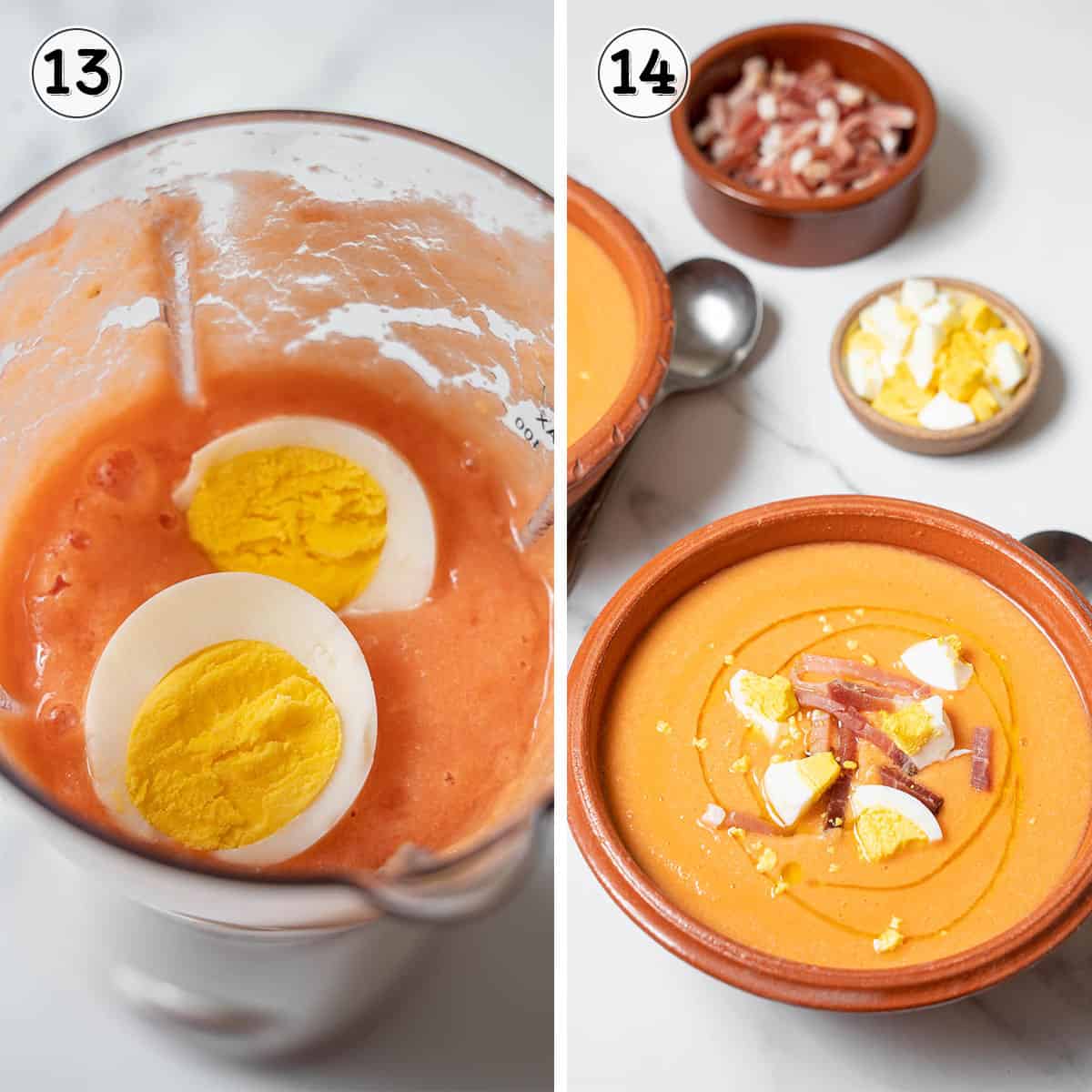
- For an extra creamy salmorejo, use my mother-in-law's secret trick of blending in one hard-boiled egg. (For a vegan version, omit this step.)
- Refrigerate the salmorejo until it's cold, then serve with hard-boiled egg, cured ham, or the toppings of your choice.
Recipe Tips & FAQs
Salmorejo comes from the south of Spain, specifically from Cordoba in Andalusia. It's served as a cold soup and also as a tapa.
Both salmorejo and gazpacho are cold Spanish soups that are popular in the south of Spain (Andalusia). But gazpacho is a mix of vegetables (tomatoes, onions, peppers, cucumber and garlic) while salmorejo only includes tomato and garlic. Salmorejo also incorporates stale bread into the puree, making it a very thick soup which is eaten from a bowl. Gazpacho has a much thinner consistency and is often enjoyed from a glass.
Yes, traditional salmorejo is a vegetarian recipe. It is also easily adapted for vegans by omitting the egg. In both cases, the optional ham topping should be omitted. You can say "sin jamón, por favor" if ordering it in Spain.
Salmorejo is traditionally served cold. Spanish summers, especially in the south, are very hot. It's not uncommon for days to reach 107°F (42°C), so cold soups became popular in this region to keep people hydrated and healthy during the intense summer heat.
Serving Tips
Salmorejo is usually served as either a first course (instead of a hot soup or a salad) or as a tapa. In Andalusia, you'll often enjoy it with other popular summertime tapas, such as shrimp fritters, croquettes, and eggplant with honey. It's perfect with a cold glass of tinto de verano.

Store
Leftovers: Salmorejo will keep in the refrigerator for up to 3 days. Be sure it's tightly sealed.
Freezing: Yes, you can freeze salmorejo in an airtight container for up to 1 month. Defrost in the fridge until it's completely thawed; avoid reheating it. Re-blend in a blender until it's smooth, then serve.
Expert Tips
- Since this is a cold soup, use fresh, ripe tomatoes for the best results. Plum tomatoes or vine ripe tomatoes work well.
- Make sure to use the best extra virgin olive oil you can. If you want to use less oil than the recipe calls for that is fine; add it little by little until you get the taste and consistency you like best.
- Experiment with the amount of bread you use. Adding more bread will give the soup a texture similar to hummus. Feel free to use a gluten-free bread if desired.
- The most popular salmorejo toppings are diced hard-boiled egg and cured Spanish ham, but you can try other toppings such as avocado, good quality tuna, smoked fish, or chopped fruit like strawberries, cherries, or green apples.
More Cold Soup Recipes
If you liked this recipe, please share it with others!
Follow Spanish Sabores on Facebook, Pinterest, and Instagram for more recipes and travel tips.
If you've made and enjoyed this recipe, please leave a 5-star review!

Salmorejo Recipe
Ingredients
- 8 medium plum tomatoes preferably vine-ripened
- 1 medium-sized stale baguette or other stale bread
- 1 cup good-quality extra virgin olive oil
- 1 clove garlic
- 1 splash sherry vinegar (Vinagre de Jerez)
- 1 pinch salt
- 2 hard boiled eggs
- diced serrano ham or other cured ham, such as prosciutto
Instructions
- Bring a large pot of salted water to a boil, then cut a small cross on the bottom of each tomato. Place the tomatoes in the boiling water for 30-60 seconds, then remove them immediately and place in a bowl of ice water to cool briefly. The tomato skins should slide off easily.
- Cut out the cores of the tomatoes and add the tomatoes to a blender. Blend on high speed for about 30 seconds, or until smooth.
- Pull out the soft center of the baguette and tear it into small pieces. You should have 2-3 cups of bread pieces.
- Add 2 cups of bread pieces to the blended tomatoes, then let the mixture stand for 5 minutes. (For a thicker texture, add all of the bread pieces.)
- Add the vinegar, salt, and garlic and blend until the soup is very smooth.
- Turn the blender to medium speed, then remove the small lid on the top and slowly trickle in the oil. If your blender doesn't have this small hole, simply stop the blender and add the oil gradually.
- Add 1 hard-boiled egg and blend until incorporated. Adjust the levels of salt, vinegar, garlic, and bread to taste.
- Chill the salmorejo until you're ready to serve it. Serve the soup cold in small bowls, then garnish with diced hard-boiled egg and sliced ham. Enjoy!
Notes
- Since this is a cold soup, use fresh ripe tomatoes for the best results. Plum tomatoes or vine ripe tomatoes work well.
- Make sure to use the best extra virgin olive oil you can. If you want to use less olive oil than the recipe calls for, you may; add it slowly until you like the texture.
- Experiment with the amount of bread you use. Adding more bread will give the soup a texture similar to hummus. Feel free to use a gluten-free bread if desired.
- The most popular salmorejo toppings are diced hard-boiled egg and cured Spanish ham, but you can try other toppings such as avocado, good quality tuna, smoked fish, or chopped fruit like strawberries, cherries, or green apples.
Nutrition
Photography by Giulia Verdinelli


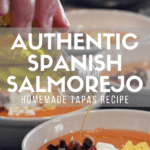
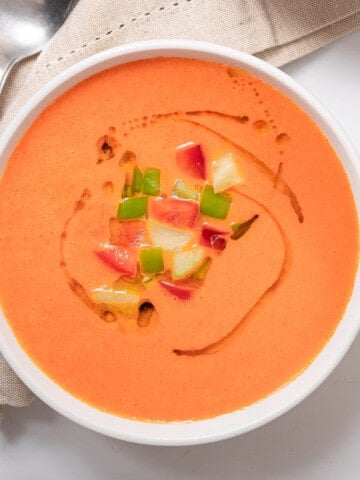
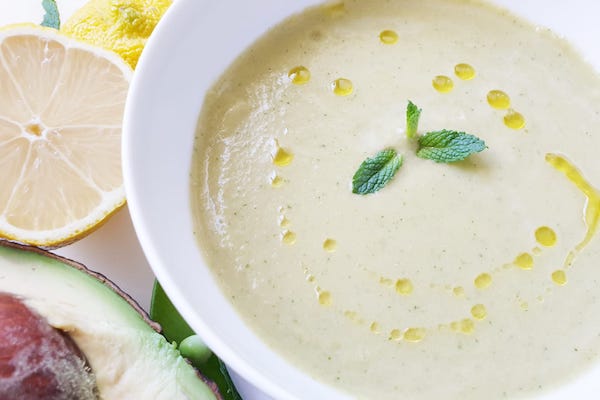
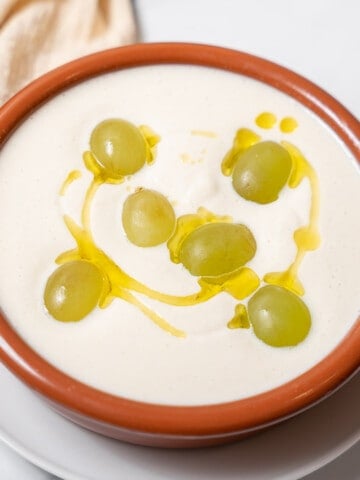
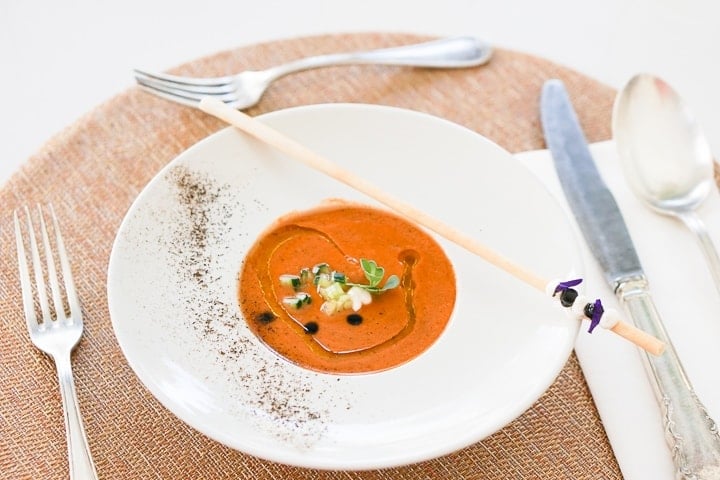

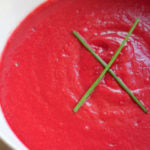
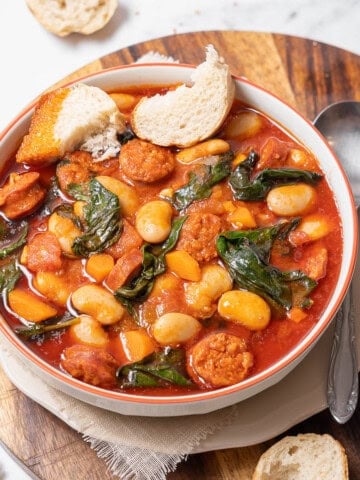
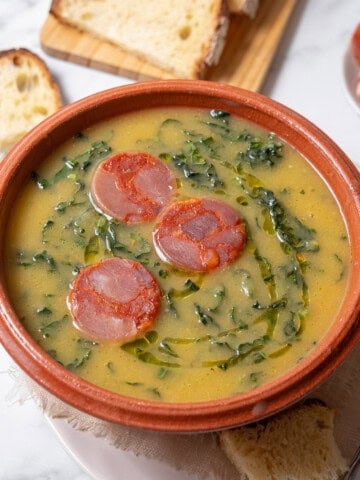

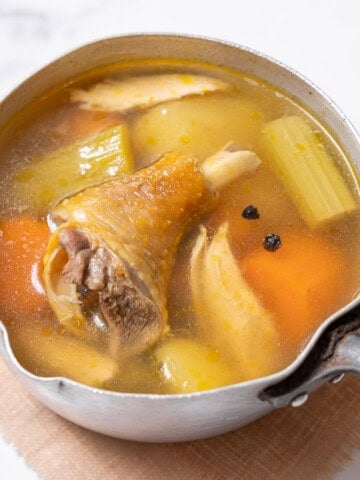
TC
Just got back from Spain where I had this soup many times. Could not wait to try to make it at home. This recipe is the real deal!